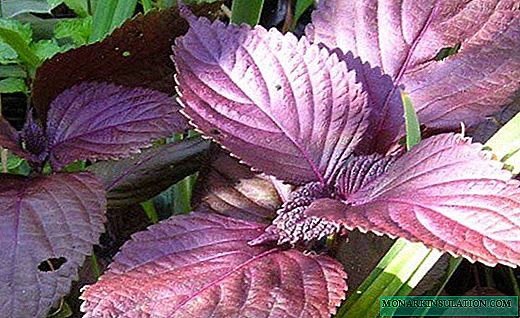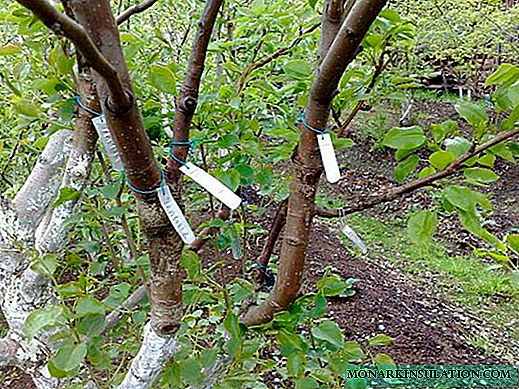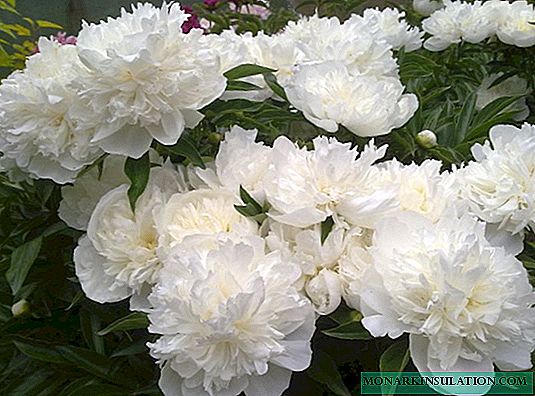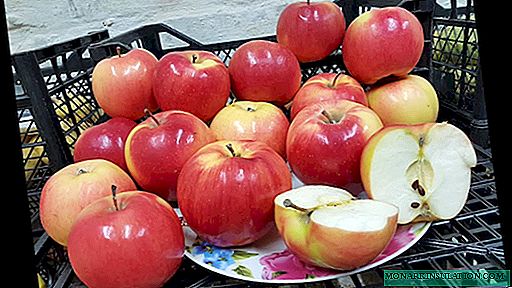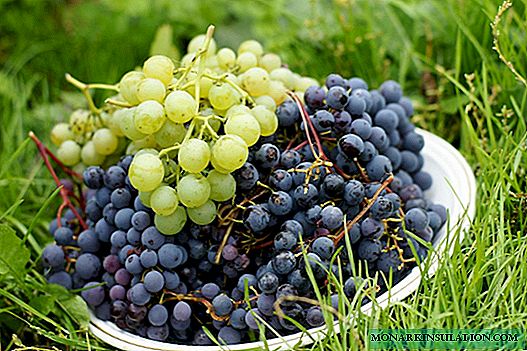
Those who have tasted Siberian grapes say that it is not inferior in taste to that brought from the south. A considerable advantage of local berries is that they are purer than southerners, since they are not processed to preserve their presentation, and when grown, chemicals are used only when necessary. Of course, the agricultural technology of this culture has completely unique regional features, but the experience gained by gardeners allows any Siberian to grow grapes.
How grapes ended up in Siberia
Cultivating grapes in the northern regions is not easy, but it is possible by working and having the necessary knowledge. After all, even in the Solovetsky Monastery on the White Sea, monks raised it.
The climate of Siberia with long winters, strong return frosts, a large amplitude of seasonal and daily temperatures, strong winds is not comfortable for grapes.
The promotion of grapes in cold climates was initiated by Stalin in the last century. At that time, active breeding work was underway to develop frost-resistant varieties. In Altai, in the fifties of the twentieth century, a vineyard was even organized, trial wine was made, but in the Brezhnev seventies and breeding work was stopped, and the vineyards were cut down.
Only such enthusiasts of Siberian viticulture, as Rostislav Sharov, Fedor Shatilov, Mikhail Levchenko, Valery Nedin and some others, continued work interrupted on a national scale. They created their own sections and schools, where the invaluable practical experience of grape culture in Siberia was accumulated and disseminated.
Grape Tale Continues
Due to the shortness of the Siberian summer, only varieties can be grown in open ground:
- with a minimum ripening period of berries - early ripe, super early, mid early;
- with high resistance to low temperatures.
Nowadays, growing grapes outside the Urals has become quite common among summer residents and homeowners. Varieties with a short ripening period of local breeding appeared: Tomich, Siberian Cheryomushka, bred by Sharov Muscat, Riddle, Pinocchio. Varieties Aleshenkin, Vostorg, BChZ (In memory of Dombkovskaya), Tukai and, of course, winter-hardy Lydia and Isabella, bred in the USA, are popular among Siberian winegrowers. Grown in the region, using additional film shelter in spring and autumn, and such purely southern varieties as Cardinal, Arcadia, Husain.
About grapes in Siberia - video
Non-covering grapes of Siberia
Most people believe that the vine is a southern, thermophilic plant, but it appears in the Far East (south of the Khabarovsk and Primorsky Territories) and in the northeast of China such an ice age relic like Amur grapes grows in the wild. He was introduced to culture in the middle of the XIX century.
Amur grape
This powerful fast-growing vine, which, having a support, can rise to a height of up to 30 meters and tolerates frosts down to -40 ºС. Due to such qualities in regions with a harsh climate, it can be grown without shelter near buildings of considerable height, on arbors, arches and pergolas. It easily tolerates transplantation at any age, tolerates pruning and propagates by green cuttings. Amur grapes look especially decorative in autumn, due to the bright color of the foliage.

Amur grapes look especially decorative in autumn, due to the bright color of the foliage
The loose clusters of this variety have the shape of a cylinder, sometimes converging on a cone. Black juicy berries of Amur grapes have a bluish waxy coating. They are covered with dense skin, the flesh inside is greenish with an ordinary grape flavor.
| Ripening period from the beginning of vegetation | middle, early fall |
| Annual growth | 2-2.5 m |
| Average cluster size | up to 15 cm, rarely up to 25 cm |
| Cluster weight | up to 250 g |
| Average grape size | Ø1-1.5 cm |
| Sugar content | up to 23% |
| Harvest per hectare | up to 6-8 tons |
| Resistance to low temperatures | -40 ºС |
Using wild-growing Amur grapes (Vitis amurensis) - a winter-hardy resemblance to Vitis vinifera (wine grapes) - many uncovered frost-resistant varieties and forms were bred. The Amur wild ancestor of the current grapes had small and often quite acidic fruits, the bred varieties have solid berries with excellent taste.
The most successful in this direction was the work of the famous breeder Alexander Potapenko, who created such resistant varieties as Odin (Amursky breakthrough), Marinovsky, Amursky triumph, Amethystovy, Neretinsky and others, resistant to severe frost and fungal diseases.
Grape variety Amethyst
Powerful bushes of this table grape, having a super early ripening period, give a crop in late August or early September. Vines are perfectly restored in case of frost damage, while maintaining yield. The ripening of the shoots is almost complete along its entire length. The variety propagates by cuttings, which are perfectly rooted.
The flowers are bisexual, all inflorescences are perfectly pollinated, so it is necessary to ration the load on the bush.
The clusters of Amethyst have the shape of a cylinder and consist of elongated, waxed dark purple berries, sometimes with a purple hue. Absolutely no pea. Ripe clusters can remain on the bush for up to one and a half months, without losing either taste or appearance. Wasps are slightly damaged.
The taste of grapes is harmonious sweet and sour, aroma with barely perceptible muscat.
At a level of 2-2.5 points, the Amethyst variety is resistant to fungal diseases, but experts advise to carry out preventive treatments without fail.
| Ripening period from the beginning of vegetation | 90-110 days |
| Annual growth | 2-2.5 m |
| The average size of bunches | up to 15 cm, rarely up to 25 cm |
| The average weight of bunches | 300 g, up to a maximum of 700 g |
| The average weight of berries | 3-8 g |
| Sugar content | up to 25% |
| Acidity | 7 g / l |
| Tasting rating | 8.1 points |
| Harvest of an adult bush | 10 kg and more |
| Frost resistance | -36 ºС |

The clusters of Amethyst have the shape of a cylinder and consist of elongated, waxed dark purple berries, sometimes with a purple tint
In Siberia, grow grapes without shelter
In addition to the named grapes in Siberia, many other forms and varieties are grown in a non-covering way:
- Amursky-1 is a super-early variety of delicious grapes created by F. Shatilov, ripens in 75-90 days at CAT * 1800-2000 ºС and has frost resistance of -42 ºС. * CAT - the sum of the active temperatures.
- Amur black ultra-early - grapes of the same breeder, ripening in 85-90 days and resistant to frost up to -36 ºС.
- Early Bashkir - a variety of super early ripening (CAT 1800 ºС) L. Sterlyaeva (Bashkir NIIZiSPK), pollinating varieties are needed, since its flowers are only female.
- Riddle Sharov - a variety with well and timely ripening vines. The small clusters of its dark blue sweet berries have a delicate aroma of strawberries. Frost resistance -32-34 ºС.
- Zilga is a variety of breeder P. Sukatnieks from Latvia with bisexual flowers, blue berries with fox aroma are collected in small clusters of up to 120 g, without shelter for the winter, one of the earliest (CAT 2050-2100 ºС) in the northern regions.
- Skuin 675 (Moscow Sustainable) - an unpretentious fast-growing complex hybrid that produces crops at CAT 2000 ºС, bisexual flowers, small clusters of up to 70 g, a maximum of 120 g, amber berries have a pineapple-nutmeg aroma.
- Sharov Muscat is black - very frost-resistant with dark blue berries. Their size is average, the taste is raisin. Wasps the berry is not damaged and does not decay.
- Muscat Katunsky is extremely resistant to diseases and frosts and with high ripening crops together.
- Pink non-covering - table yielding grapes with excellent taste, one of the best qualities in the complex.
- Taiga - was discovered in the Primorsky Territory (its southern part) in 1933. The bushes are powerful, fast-growing, with female flowers, clusters of 150-300 g, berries are bluish dark cherry with a pleasant taste. They ripen in late summer or early September, contain 20% sugar. The variety tolerates thaws, drought, frost up to 42-44 ºС.
- Cheryomushka Siberian - the earliest winter-hardy grapes grown by Siberians. It is similar to Isabella, but with the smell of bird cherry. After ripening the bunch you can not remove it from the vine for a long time, berries only improving your taste.
- Express is a universal super-early grape ripening in Primorye in the first half of September, in loose brushes weighing up to 300 g, black sugar berries contain up to 26%. Express tends to overload the bush with bunches, their rationing is required to avoid falling berries and peas.
Varieties of American origin
Many grape varieties and their forms were bred on the basis of Fox grape - "fox grapes" that grows on the American continent in the wild. Its scientific name is Vitis labrusca (Vitis labrusca). All descendants of Labrusca have, to a greater or lesser extent, a characteristic taste and aroma, which we have called "isabella". Their berries often accumulate even more sugars than table grapes. At the same time, the vines themselves are not demanding on care and soils, they are fruitful, perfectly restored from damage, are not susceptible to or less susceptible to fungal diseases and are resistant to frost up to -35 ºС.
Grapes Alpha
Beginning winegrowers can be recommended to pay attention to the Alpha variety, which appeared as a result of the natural crossing of Labrusca with Vitis riparia (Vitis riparia). It ripens before Isabella, although in appearance and taste it is very similar to it.
Alpha - productive, unpretentious, vigorous, well-ripening, resistant to fungal diseases. The ripening period of this grape is early-middle, and even forty-degree frosts in winter are not afraid of vines. Alpha blooms annually a week and a half before such varieties as Muromets or Delight. The clusters of medium size, dense, consist of round black berries covered with a wax layer. They taste somewhat sour, so they go to make juice.

Alpha - productive, unpretentious, vigorous, well-ripening, resistant to fungal diseases
Arbors or walls of houses overgrown with grapes of this variety look beautiful. They grow Alpha in the Baltic States, Belarus, Primorye, Non-Black Earth, Siberia. It belongs to the most frequently grown grape varieties in the regions of northern viticulture.
Grapes Lando Noir
Lando Noir is one of the varieties bred by breeders in France and the United States. Vitis vinifera, vitis rupestris, vitis berlandieri, vitis aestivalis, vitis labrusca, vitis rupestris, vitis cinerea were involved in the creation of the genetic formula of this grape.
Lando noir is a frost-resistant high-yielding grape whose berries ripen in a short time. The vines are vigorous, the shoots ripen well in winter, so the grapes can withstand thirty degrees of frost well. Opening of the eyes, as a rule, occurs at a time when return frosts have already passed. Such features of the variety allow you to grow Lando noir in Siberia.

Lando Noir - one of the varieties bred by breeders of France and the USA
Small, loose clusters of this grape consist of round blue berries. Their size is average. They produce red wine with good taste and good quality.
Somerset Sidlis
This sultry Elmer Swenson selection grape can be recommended for uncultivated cultivation. Its resistance to frost is kept within the range of -30-34 ºС, and the ripening period is one of the earliest.

This Elmer Swenson selection gobble grape can be recommended for uncultivated cultivation.
Somerset sidlis vines have medium vigor. Bunches of small or medium size, consisting of medium-sized berries of pink color. They have a pleasant taste. Somerset Sidlis has low yields, but it tastes great. Eating grapes of this variety can be done as soon as it turns pink, usually this happens already in August, but remaining on the vine, the berries ripen when ripened, their aroma is more clearly complemented by strawberry notes.
Early grapes in Siberia
The climate of Siberia allows you to grow grapes with a very short ripening period of berries, that is, only super-early, early, ripening in no more than 120 days. Even mid-early varieties, with ripening periods of 125-130 days are extremely rarely grown by Siberians.
Many of the varieties of early ripening have already been listed above, but in each particular area and even in a particular area, the wine grower decides whether he can cultivate this particular variety of grapes in a flintless form or still need to be protected from frost for the winter.
Growing grapes in Krasnoyarsk
Varietal variety of grapes in Siberia
Using shelter grapes for the winter, some Siberians manage to grow a variety of grape varieties. Among them, even those that were bred by breeders and recommended for more southern regions. But widespread varieties, the ripening of which is close to a hundred days. We will tell you more about some of them - the most popular among Siberian wine-growers.
Solovyova-58
Grapes bred in Ukraine by N. Solovyov can now be found in garden plots from the Baltic to Siberia. It is one of the earliest, for aging it needs to have a sum of active temperatures of 2200 ºС. It has bisexual flowers, gives small loose clusters weighing from 100 to 300 grams, consisting of light with orange specks of round berries weighing 2-4 grams. The taste of Solovyov-58 grapes is pleasant, it combines nutmeg and strawberries. It perfectly resists diseases, but it withstands frosts only up to -32 ºС, therefore in Siberian conditions it is sheltered for the winter.

Grapes bred in Ukraine by N. Soloviev
Beauty of the North (Olga)
The table grapes Krasa Severah have vigorous bushes that ripen well and withstand frosts down to -25 ºС, but in Siberia they cover it for the winter. But the berry ripening period, which is 110 days, and CAT 2200 ºС fully correspond to the climatic conditions of the region. The average bunch of this variety can weigh 250 g, large - up to 500 g. The clusters are loose, branched. Five or six gram white berries find a pinkish tan only in the sun. Inside them under a thin skin juicy pulp with a pleasant taste. Tasters rated it 8 points. Sugar content - 16-17%, acid - 5.4 g / l. Bunches can be successfully transported and stored for a long time, some until the New Year holidays. The variety is relatively resistant to cracking berries and gray rot disease, but susceptible to oidimum and mildew.

The table grapes of Krasa Severah have vigorous bushes that ripen well and withstand frosts down to -25 ºС
Muromets
Muromets table variety ripening in 110 days is grown by many Siberian gardeners. It can be eaten fresh or dried for raisins. The frost resistance of Muromets, low for Siberia (up to -26) ºС, determines the covering method of growing this variety. Powerful harvesting bushes of this grape well resist mildew, but are subject to gray rot and oidimum. Shoots for winter ripen almost the entire length of growth.
Muromets flowers are bisexual. Cooling during the flowering of grapes, as well as overloading the bush, lead to peeling - the appearance of a large number of small berries. Large brushes weighing up to 0.4 kg have a conical shape and medium density. Pretty large oval berries of dark purple color are covered with a coating of wax. Their pulp is dense, crisp. It accumulates up to 17.8% sugar and a little more than 4 g / l of acid.
With prolonged rains, the berries may crack. In this case, even the unripe grapes are removed and sent to home-made preparations (stewed fruit, preserves, etc.).

Muromets table variety ripening in 110 days is grown by many Siberian gardeners
Super Red Muscat
By the speed of ripening of berries for 95-100 days, this variety is ideal for conditions in Siberia, but its frost resistance reaches only -23 ºС, so they grow it only by covering for the winter.
The average size of clusters of this variety ranges from 300-600 grams. They are moderately dense or somewhat loose. Round red berries with a diameter of 1.8 cm and weighing up to 5 grams when ripe become almost purple. With the age of the bush, clusters and berries become larger.
The crisp flesh of grapes has a bright nutmeg taste and aroma. Grapes gain up to 18% sugar, acid has up to 7 g / l. Tasters gave 7.7 points to the fresh berries of this nutmeg. Wasp berries do not damage. Harvest tolerates transportation.
Red nutmeg is resistant to gray rot, but false (mildew) and powdery mildew (oidimum) resistance is medium.

By the speed of ripening of berries in 95-100 days, this variety is ideal for conditions in Siberia
Rusven
The universal variety Rusven was developed in cooperation between Russian and Hungarian breeders, and therefore received this name. Bushes are characterized by medium or high growth power. Although its shoots ripen well and the crop ripens in 115 days, Rusven can withstand frosts only up to -27 ºС, which is why in Siberia it is cultivated as a cover.
Bunches form extremely large, their average weight ranges from 350-550 grams, but the maximum can be up to a kilogram. Large round berries, in diameter exceeding 2 cm, weigh an average of 5-6 grams. The ripened Rusven berries are covered with a matte crust with light red veins. They taste good, and their musky aroma is complemented by sage notes. The sugar content in them is 20%, and the acids are 7-9 g / l.
Rusven variety is resistant to fungal diseases. During heavy rains or excessive watering, its grapes are prone to cracking. They do not like transportation. Grapes also need protection from wasps with special nets or insecticides.

The universal variety Rusven was developed in cooperation between Russian and Hungarian breeders
Late grape varieties in Siberia
In the Siberian region, the cultivation of grape varieties with long ripening periods is extremely difficult due to the peculiarities of the local climate. Even in the most favorable year, the crop most likely will not have time to ripen, and there is no need to talk about the ripening of wood and the readiness of the bush for winter with severe frosts. In the culture of Siberian viticulture they are not common.
Reviews of Siberian winegrowers
More about the Shatilov hybrid forms. Muscat is superearly Shatilov. (16-1-23 * Soviet pearls). Bunches up to 1kg. Berries 4-5g, green, with a nutmeg aroma. Diseases are not noticed. Early maturity. Homeland - 2. Bunches up to 800g, conical, medium density. Berries 4-6g, black, rounded. The pulp is fleshy and juicy. GF 2-2-8. (Kodryanka * Amur). Early ripening (10-15 days earlier than Kodryanka). Bunches up to 1.5 kg, conical shape, medium density. Berries 5-6g, dark purple, oblong. The flesh is crispy, fleshy-juicy, harmonious taste. Sugar content 22%, acidity 6g / l. All of these forms have much in common. The surface of the leaves is mesh-wrinkled, pubescence on the underside of the leaf. Petioles of pink leaves. Vine ripening 90%. Frost resistance - 27-30 degrees. High disease resistance. GF vigorous. These forms grow in the Chelyabinsk and Orenburg regions.
Uglovvd//forum.vinograd.info/showthread.php?t=3050&page=2
What are the ripening dates for Korinka Russian compared to other varieties?
In a typical year, a week earlier than the Sharov Riddle. Last year (frankly cold, CAT less than 1900) - at the same time. It turns out that the difference is not significant, the yield in ordinary years is low, and the growth is the strongest. This growth is most annoying. In short, a very good stock is obtained from a poor grade. That is my verdict.
Taty//forum.vinograd.info/showthread.php?t=3728&page=3
We Aleshenkin and K-342 ripen at the same time (3rd decade of August in a normal year). But the yield of K-342 is much lower than that of Aleshenkin, although the taste and presentation are the same. Fruited in me K-342 for 2 years. I got rid of him. In recent years, Aleshenkin himself has gradually turned into a raisin (perhaps due to poor pollination of the last cold years). As a result, the berry is smaller, but with soft rudiments or without seeds at all, and the berry is sweeter and ripens earlier. Why not K-342! (These are just my personal observations).
spuntik//forum.vinograd.info/showthread.php?t=3728&page=11
On 05/29/16, Solaris, Alminsky, Rondo, and your HKCh Mukuzani had already begun to bloom (it started generally on 05/24). Now, if it had already faded away from you, then yes, it would be a sensation. But on the other hand, is it such a good flowering earlier? Rains pour (with us) almost every day, and it pours, and not drizzle. Therefore, what will be pollination is still a big question. Maybe nothing will have to be normalized ...
Vladimir//forum.vinograd.info/showthread.php?t=13050
Siberian grapes grown in open ground, and not in a greenhouse, this is no longer a fairy tale, but a reality. Having correctly selected grape varieties for his plot, the gardener can remove fresh produce for a month and a half - from mid-August to the end of September, and if stored properly until the spring of next year, feast on grape berries.


